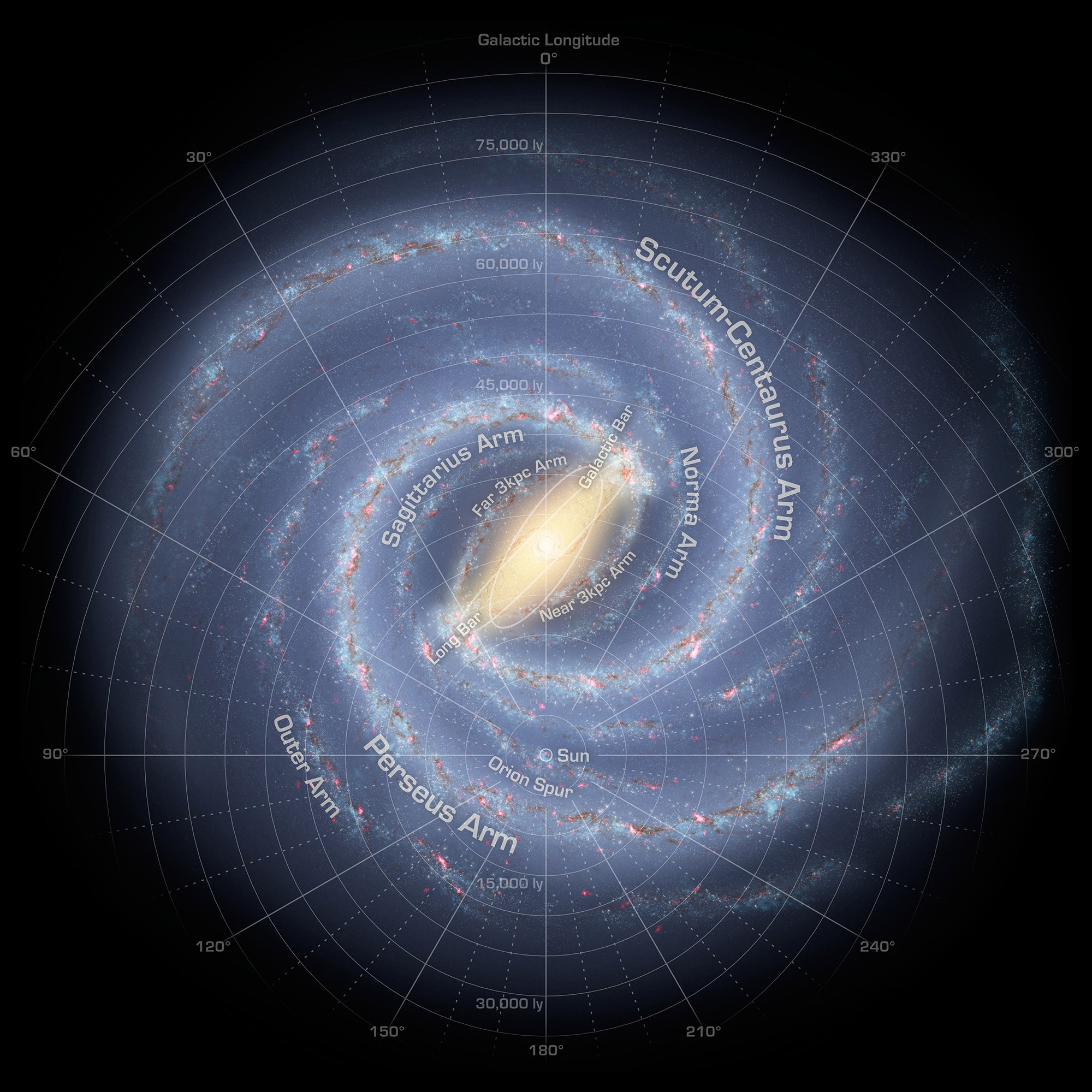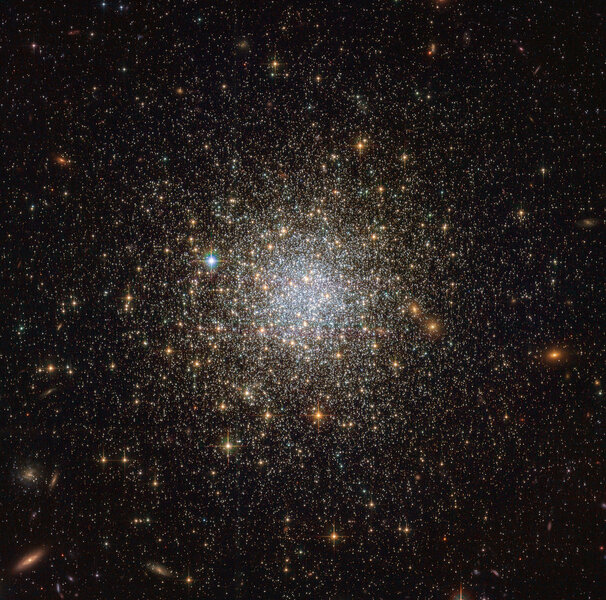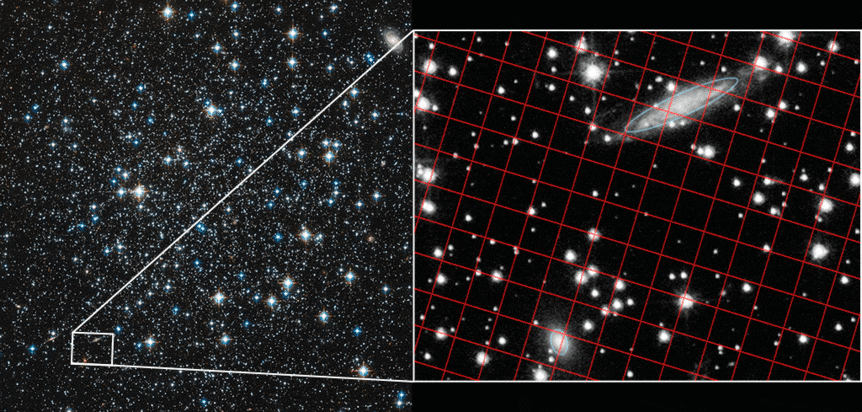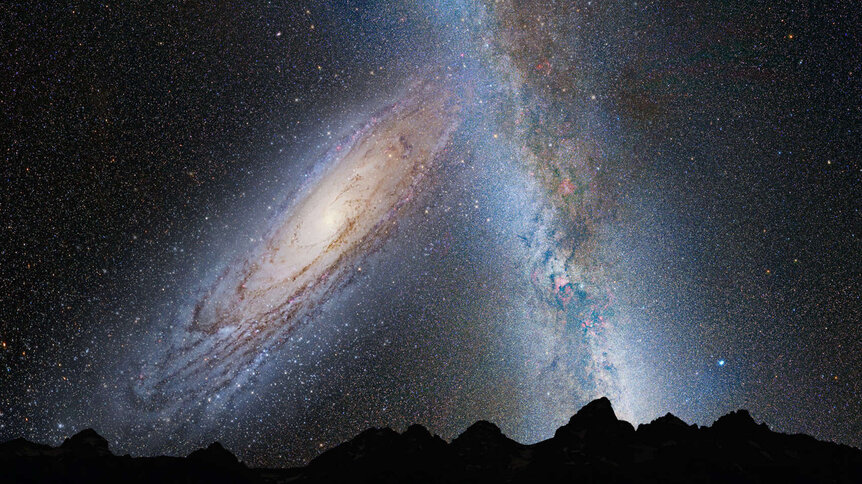Create a free profile to get unlimited access to exclusive videos, sweepstakes, and more!
What is the mass of the Milky Way?

A weird thing about astronomy is that one of the hardest things in the entire Universe to understand is the Milky Way galaxy.
It’s like knowing a lot about your neighborhood, the nearby city, and even your state, but not really knowing much about your own house.
To be fair, it’s like trying to understand your house but not being allowed to leave your closet. We’re inside the Milky Way, stuck about halfway out from the center, and everything we learn about it we learn from right here. The good news is we humans are really, really clever.
We invented telescopes! And we figured out how to observe the galaxy in different ways, and we learned that it’s a flat disk with spiral arms, surrounding a bulgy sphere of stars, surrounding a nucleus with a whopping great black hole in the center. There’s also a halo of stars surrounding the whole thing. We even have decent numbers on how big each component is, and even the mass for most of it.
Most… but not all. The disk, bulge, and nucleus are all made of what we call normal matter, atoms and electrons and protons and neutrons and stuff like that. Over the years we’ve been able to determine the mass of these components, mostly because we can see them and measure them.
But that halo is a problem. It has normal matter in it too, mostly in the form of stars, but the fact is the majority of it is made up of dark matter, stuff we can’t see, and can only infer.
The good news is that dark matter is still matter, and that means it has mass, and that means it has gravity. And that means (I may be getting too many “that means” deep here, but that’s the last one) we can determine its mass by how its gravity affects other stuff inside it.
And there is stuff inside the halo we can see, namely globular clusters. By combining data from the Hubble Space Telescope with new measurements using the phenomenal Gaia observatory, astronomers have now figured out the mass of the Milky Way halo: It’s 1.54 trillion times the mass of the Sun.
That’s a lot. It’s a big galaxy! But the fun is in how they did this.
An example: In our solar system, the overwhelmingly largest mass is the Sun. If you measure how fast a planet orbits the Sun, combined with its distance, you can determine the mass of the Sun (because the planet’s orbital speed is determined by the Sun’s gravity, which depends on its mass).
It’s more complicated for the galaxy, where the mass is more spread out, but the principle is the same. Isaac Newton showed that the gravity you feel from an object is the total mass between you and it. It doesn’t matter if the Sun is a teeny point or fills the orbit of the planet, the gravity felt by the planet is the same. Only the mass interior to the planet’s orbit matters.
So it goes for the Milky Way. If you want to get the mass of the Milky Way, you need to spot some very distant orbiting object, then measure its velocity around the galaxy to calculate all the galactic mass inside its orbit. This is pretty hard, because an object tens of thousands of light years away can be screaming through space, but it’s so far away that the apparent motion is small.
But: We have really good telescopes. And that motion can sometimes be measured.
Enter globular clusters. These are collections of hundreds of thousands or millions of stars held together by their own gravity, and they look like sparkling bees circling a hive. The Milky Way has at least 157 of these clusters, all orbiting the galactic center. Many are close by, and so not much use in getting the galaxy’s mass (the more distant, the more is enclosed by the orbit, so the better), but quite a few are very far away indeed.
The European Space Agency observatory Gaia was designed to look at over a billion stars in our galaxy, and determine their position, colors, and motion. It doesn’t discriminate; it looks at every star it can, and many of those are in globulars. That means we have the motion across the sky of many of these clusters. Combined with careful measurements of their light to get their Doppler shift, that gives us a three-dimensional velocity of those clusters!
The astronomers who did this work used 34 such clusters out of 75 measured by Gaia that fit what they needed, and they ranged in distance from 6,500 to almost 70,000 light years away from the galactic center. They also did this with clusters even farther away (out to nearly 130,000 light years) measured by Hubble. That added 16 more to their tally.
They were able to get everything they needed to then work out the mass of the galaxy. It’s still not easy, though! For example, the inner clusters seen by Gaia were more numerous, and so they got better statistics with them, but they’re not out far enough to get the total mass of the galaxy; the galactic halo extends past them, and they can’t measure its mass with them. The Hubble clusters helped, but there were fewer of them, so the statistics were a bit dicier (although they got different total mass estimates using the two different cluster populations, the two numbers were within the statistical uncertainty of each other, which means that they’re indistinguishable statistically).
In the end they had to extrapolate out past these clusters given what we know about the shape and size of the halo, but again the numbers they got were consistent. To be fair, what they got was 1.54 trillion times the mass of the Sun, with an uncertainty of +0.75 trillion and -0.44 trillion… so it could be anything between 0.79 and 2.29 trillion.
This puts the Milky Way among the big galaxies in the Universe (which we knew). Many are larger, but most are much smaller.
So why do this? Does it matter what our total mass is?
Yes! For example, the mass of our galaxy is important in understanding the satellites that orbit it. There’s some argument over the behavior of the two biggest, the Large and Small Magellanic Clouds. Will they eventually collide? Are they truly orbiting us or just passing by? Our mass plays a part in that.
Eventually the Andromeda galaxy will collide with us (in about 4.6 billion years). How that happens depends very much on our mass. The mass determination of the Milky Way also tells us about the structure of our galaxy, and even how it plays into the larger scale structure of the Universe. And it also tells us, simply enough, is our galaxy typical? Are we like other galaxies in some ways, different in others? We use our local surroundings as a template to understand what lies beyond — whether it’s our house in a neighborhood of hundreds of others or our galaxy among trillions.
It’s a bit parochial, sure, but it’s a good place to start. And, as we’ve found over and again, the Universe has a way of adjusting our initial outlook, diminishing our prejudices and strengthening our appreciation of diversity in the cosmos.
I’ve always felt that, despite the cold and uncaring demeanor of the Universe at large, that’s a profound lesson I can use in my own life. Maybe you can, too.






























